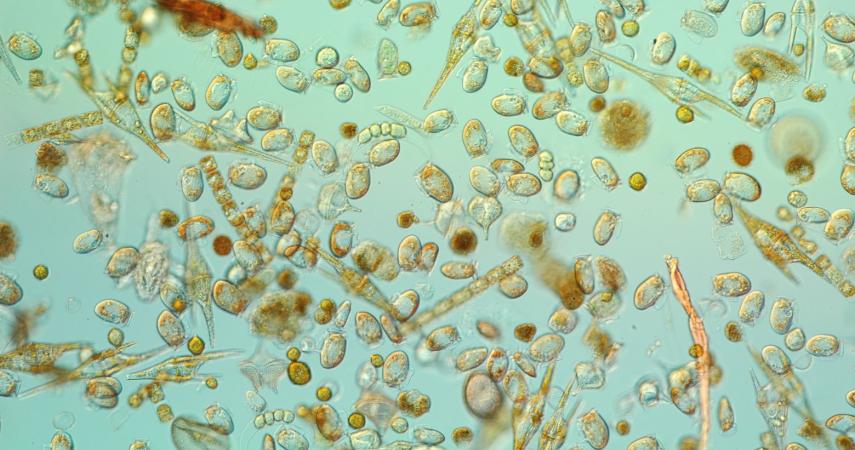The toxic microalgae `"Dinophysis acuminata" adapts its life cycle to the upwelling system of the rías
The IIM participates in a new study that reveals how this microalgae that affects bivalve cultures resists in outdoor waters and grows rapidly in estuaries when optimal conditions exist.

Vigo, 18th April 2023. Scientists from the Spanish Institute of Oceanography (IEO, CSIC), the Centro i ∼ mar & CeBiB (Los Lagos University) and the Institute of Marine Research (IIM-CSIC) have published a study that provides new data on the adaptations of toxic microalgae Dinophysis acuminata that allow it to remain all year round between the estuary and the outer waters of the platform.
The study, which has just been published in the journal Harmful Algae , shows that the cells of this microalgae, the main cause of shellfishing bans in the Galician estuaries during the blooming season between March and September, can remain in the upper layer of water and be washed out of the rías, where they find refuge and remain until the wind transports them back to the estuary and the conditions are given for a new blooming:"These microalgae use the typical circulation of the upwelling system as if it were a reversible conveyor belt," explains Esther Velasco- Senovilla , IEO researcher and first author of the study.
The results demonstrate the resilience of D. acuminata , which is capable of moving from the estuary to the platform and tolerating sudden changes in temperature and turbulence. However, it requires very specific conditions for its growth, which only occur in a narrow range of temperature and salinity conditions and in the presence of the ciliate Mesodinium , which it feeds on to steal its chloroplasts. "Contrary to what has been established by other authors, the most intense exchanges between the estuary and the platform favor the blooming of this species," says the scientist.
Sampling for this study was carried out in June 2013 in the Vigo and Pontevedra estuaries and the adjacent continental platform on board the Ramón Margalef oceanographic vessel, during the ASIMUTH Rías campaign. Samples for phytoplankton and pigment analysis were collected and data on the hydrographic variables of interest were recorded along cross sections from the interior of the estuaries to the platform and during a 36-hour cycle at a fixed sampling point, which allowed study in great detail the niche of the species. The study includes, for the first time in this type of analysis, the different forms or stages of the life cycle of D. acuminata , which has made it possible to identify the environmental changes that promote its development.
"The results of this work allow us to understand how D. acuminata responds to sudden changes in environmental conditions and how it remains in the system throughout the blooming season," explains Velasco- Senovilla . "In other words, we now understand why this microalgae is so persistent in the Rías Baixas and why it causes (in a matter of hours) peaks of diarrheal toxin accumulation in mussels after a change in wind direction."
